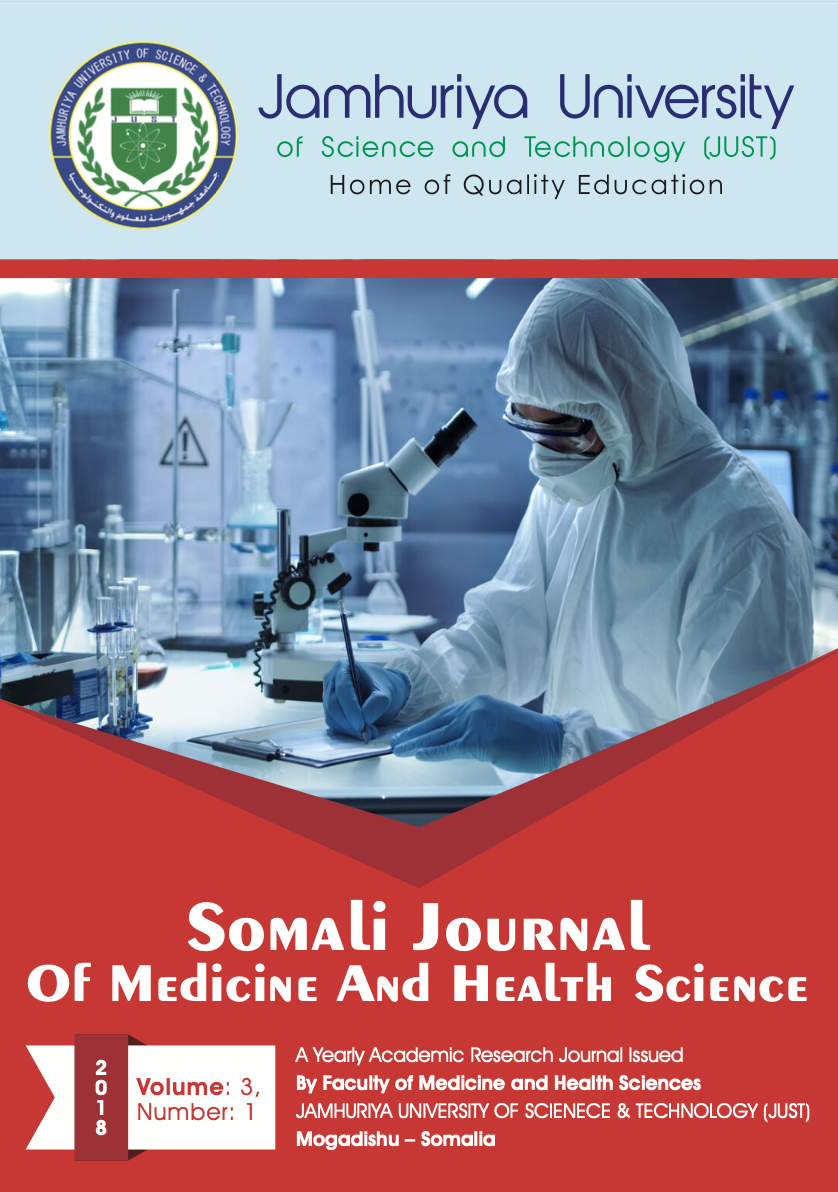Effectiveness and Treatment Outcome of ESWL as Intervention Method at Shaafi Hospital, Mogadishu-Somalia
DOI:
https://doi.org/10.59067/afjhms.v3i1.36Keywords:
kidney stone, effectiveness, treatment, outcomeAbstract
Renal stone is a most common clinical disorder affecting up to 5% of the general population in the USA. The prevalence of renal stone disease has been rising in both sexes, being estimated that about 5% of American women and 12% of men will develop a kidney stone at some time in their life, however, in certain areas of the world, as in the Middle East, the lifetime risk appears to be even higher, There has been heightened awareness of renal stone disease in children as well, Recurrence rates of 50% after 10 years and 75% after 20 years have been reported Epidemiological data on urolithiasis in sub-Saharan Africa are rare because research resources throughout most of the continent are poor. South Africa is an exception in this concern. Stone disease has been reported in several countries. Epidemiological factors in these regions are not unusual. However, in a few countries the disease is extremely rare. The absence of stones can be attributed to epidemiological factors in all regions except South Africa, where stone shortage arises because of racial differences between the white and black population groups. Routine urinary biochemical risk factors cannot account for this phenomenon. However, the protective capacity of urinary proteins may play a role in this regard The aim of this study were to investigate factors associated kidney stone and effectiveness and treatment outcome of ESWL as intervention method in shaafi hospital Mogadishu Somalia The specific objectives of this study were . To determine factors associated kidney stone at shaafi hospital. To asses availability and treatment outcome with renal calculi among adult patient in shaafi hospital in hodan district. Methodology used a descriptive cross-sectional design and the study area is shaafi hospital Mogadishu Somalia A total 40 respondents was purposively selected from 40 respondents The data were collected during 1-14 days may 2018 using structured questionnaire, . The data was compiled and analyzed by using SPSS version 20. The Result reveal that the majority of the respondents (65.0%) were male and the majority of the respondents (32.5%) were between 18-25 years and mostly respondent (70.0%) of the respondent said yes when asked the question saying do you eat food such as peanut red meat poultry eggs and seafood sugar sweetened foods that have the risk of kidney stone. (42.9%) of the respondent said red meat when asked the question saying if yes what food or diet. (50.0%) of the respondent said 1-2 litter of water when asked the question saying what is the level of your fluid or water intake. (55.0%) of the respondent said lower calceal when asked question saying The location of your kidney stone (65.0%) of the respondent were said 1-10mm when asking question saying what is the characteristic of the stone after the ESWL, intervention with size. The study recommends. To Changes in dietary habits, and changes in lifestyle and increase water intake To The composition of previous stone dietary advice will vary additional medication may be necessary for patient with high risk profile. To educate health workers to consult the patient with kidney stone to visit in the machine to increase awareness of the patient of important of machine during kidney stone.


